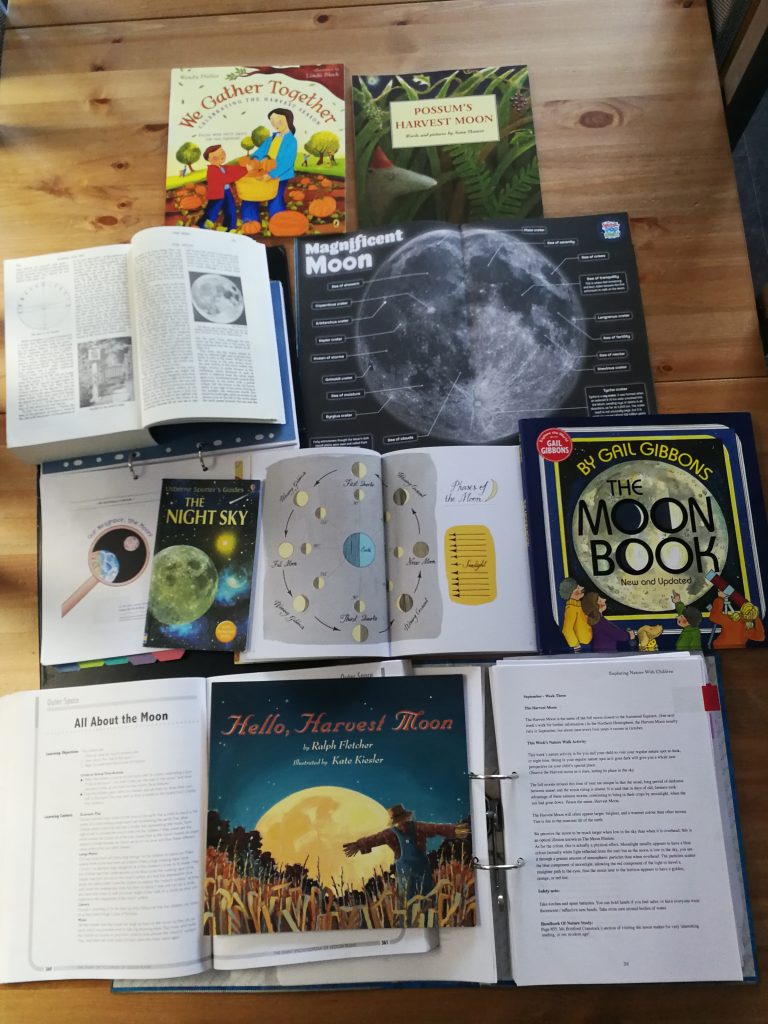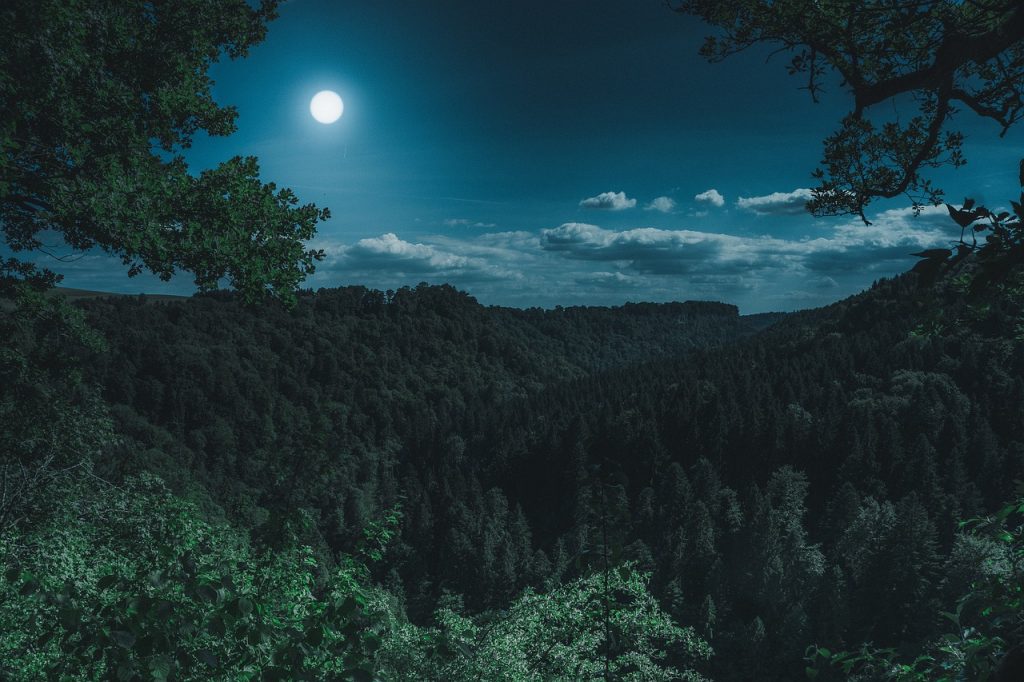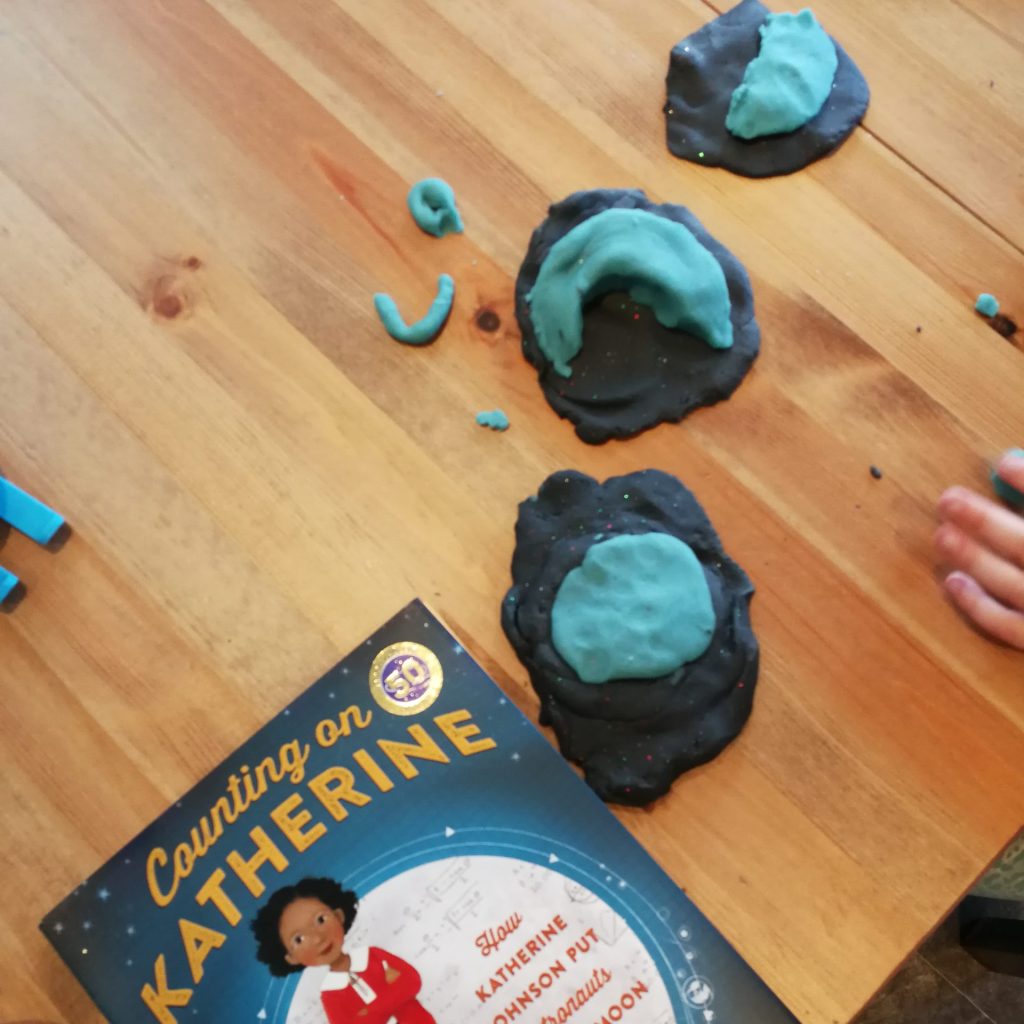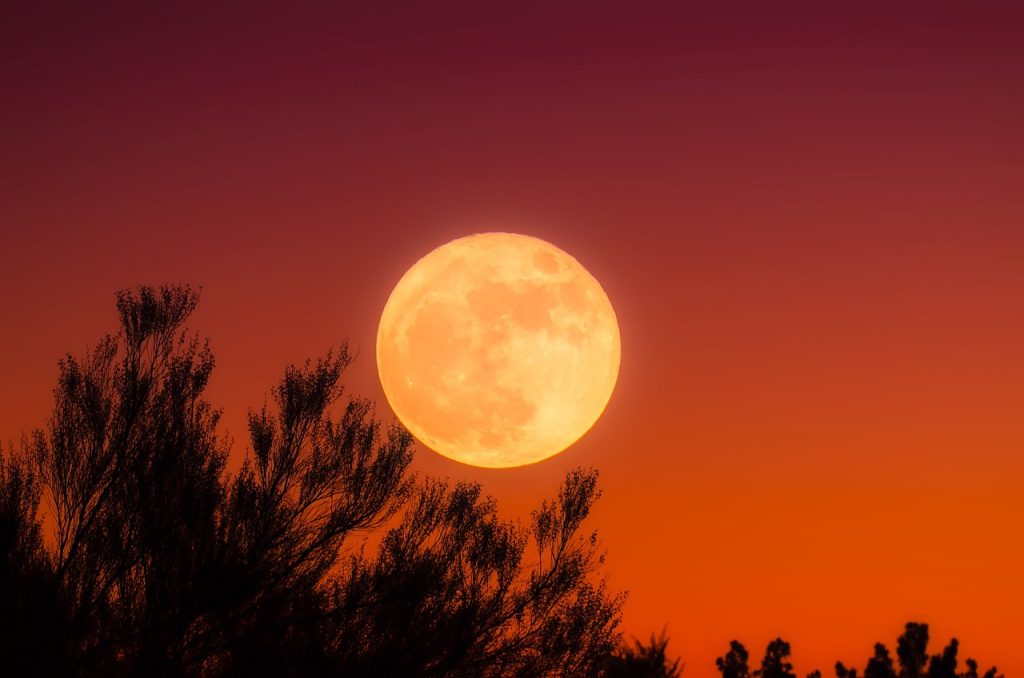As I reviewed our Home Education activities from the last 4 years one topic kept coming up again and again; The Moon. The moon takes centre stage in our night sky and it has enchanted children and adults alike for thousands of years. Join me in this blog series where I will take a deep dive into learning about the moon; from discussing the moon phases and why they occur, to looking at what each full moon is called and why, to defining what a blue, black and harvest moon are. Did you know that each full moon has it’s own name and a reason behind that name? Read on to find out more.
The moon travels around the earth, taking 29.5 days to complete its orbit.

With its changing shape throughout each month and altering appearance during each season the moon is an interesting study at any time of year. The moon spins as it orbits the earth and the side facing the sun is lit up, while the other side is in darkness. At different times of the month different amounts of its sunlit side are visible from Earth. This makes the moon seem to change shape from one night to the next. From waxing crescents to waning gibbous, and from the shadowy New Moon and to the bright Full Moon, each lunar phase brings a unique and awe-inspiring spectacle.

This post is the first in a series of posts were we will embark on a journey through the full moons of Britain and Ireland, while discussing the cultural, historical, and mystical story associated with each Full Moon. In part one of this series I will start with a discussion of the phases of the moon and introducing the names for each full moon of the year. I will end the post by providing definitions for a blue, black and harvest moon.
The Phases of The Moon:
The moon has held an enduring fascination for humanity, influencing myths, folklore, and cultural practices around the globe and across the ages. Its changing phases can be thought to symbolise life’s cyclical nature, from birth to adulthood and then to our eventual decline. The moon moves through 8 phases each cycle from the new moon to the full moon and back to the new moon again. You can download a free moon phases poster below and then read the next paragraph which explains the journey of the moon through each phase.
I wrote this for my kids to discuss the changing phases of The Moon; Picture this the moon’s out there, doing a bit of a dance around our Earth. It all kicks off with the New Moon, a bit mysterious, just a shadowy shape in the night. Then, it goes into the Waxing Crescent, showing a hint of its cheeky light. As it keeps on its journey, we get to the First Quarter Moon – half bright, half taking it easy in the shadows. The Waxing Gibbous comes next, amping up the glow until it’s party time at the Full Moon. The whole moon’s shining like a grand disco ball. After the big show, it starts winding down, hitting the Waning Gibbous, then the Last Quarter Moon, and finally, the Waning Crescent before heading back to that mysterious New Moon look.
This video is also helpful in explaining the moon phases
At this point carrying out a hands on activity with kids can help to solidify the ideas that have been discussed such as creating the moon phases with Play Doh as shown below.

The Names of the Full Moon:
In Britain and Ireland, the full moons have distinct names, each carrying a touch of cultural and seasonal significance. The names often stem from ancient traditions, folklore, and the observations of the natural world. In this series of blog posts will expand on each moon and its name in turn but for now I will simply give you and overview of each full moon name. The Wolf Moon, occurring in January, references the howling of wolves during the winter months. February brings the Snow Moon, reflecting the typically heavy snowfall during this time. In March, the Worm Moon emerges, symbolising the earthworms returning to the soil as winter retreats. The Pink Moon of April doesn’t necessarily appear pink but signifies the blooming of pink flowers. May’s Flower Moon celebrates the abundance of blossoms, while June’s Strawberry Moon aligns with the strawberry harvest season. July brings the Buck Moon, named after the new antlers that emerge on young buck deer during this period. August’s Sturgeon Moon signifies the peak of sturgeon fishing in large bodies of water. As summer transitions into autumn, September introduces the Harvest Moon, traditionally associated with the time when farmers reap the fruits of their labor. October’s Hunter’s Moon follows, providing ample moonlight for hunters to stock up on provisions for the upcoming winter. November’s Beaver Moon marks the time when beavers build their winter dams, and December’s Cold Moon captures the chill of the approaching winter season. Each name encapsulates a unique aspect of the natural world, forming a cultural calendar that connects people to the changing seasons and the rhythms of the Earth and sky.
Rare Lunar Events
What about some of the unusual types of moon that occur from time to time such as a Blue Moon, a Harvest Moon and a Black Moon?
What Is A Blue Moon?
A blue moon is a relatively rare event in the lunar calendar, characterised by the occurrence of an additional full moon within a given timeframe. Contrary to its name, a blue moon doesn’t typically appear blue in colour; instead, it refers to the occurrence of an extra full moon in a season or month. Traditionally, a blue moon was defined as the third full moon in a season that had four full moons, with each season usually containing three full moons. However, in modern usage, a blue moon is more commonly understood as the second full moon to appear within a calendar month, which happens approximately once every two to three years. This celestial phenomenon has captured human imagination for centuries, inspiring myths, folklore, and even the popular phrase “once in a blue moon” to denote something rare or unusual.
What is a Harvest Moon?
The harvest moon is a captivating astronomical event that holds cultural and agricultural significance. It is the full moon that occurs nearest to the autumnal equinox, typically in September or early October in the Northern Hemisphere. Unlike other full moons throughout the year, the harvest moon rises shortly after sunset and appears larger and brighter than usual, illuminating the night sky with its golden glow. Historically, the harvest moon served as a vital natural marker for farmers, signaling the optimal time for harvesting crops as the moonlight extended working hours into the evening. This lunar phenomenon has been celebrated in various cultures worldwide, symbolising abundance, gratitude, and the bountiful harvest season. Today, the harvest moon continues to evoke a sense of wonder and awe, inviting people to marvel at the beauty of nature.

What Is A Black Moon?
A black moon is a rare celestial occurrence marked by the absence of a visible new moon in a calendar month. In essence, it is the flip side of a blue moon, which typically refers to the presence of an additional full moon in a month. During a black moon, the illuminated side of the moon is facing away from Earth, making it virtually invisible against the dark backdrop of the night sky. Although infrequent, black moons occur approximately once every 32 months, providing a fascinating glimpse into the intricacies of lunar cycles and celestial mechanics.
What to Expect in Future Posts:
This blog series is just beginning. In the upcoming posts of this series, we’ll delve deeper into the unique characteristics, folklore, and cultural significance of each full moon that graces the night skies of Britain and Ireland. I will also discuss activities along the way that my children and I undertook and recommend books that will complement your studies. Which is your favourite full moon? Let me know in the comments.

[…] in January is called the Wolf Moon. In this blog post, which is the 2nd in a series of posts on the Full Moons of Britain and Ireland, I will introduce a lesson plan for learning about the Wolf Moon and wolves in general. Whether […]